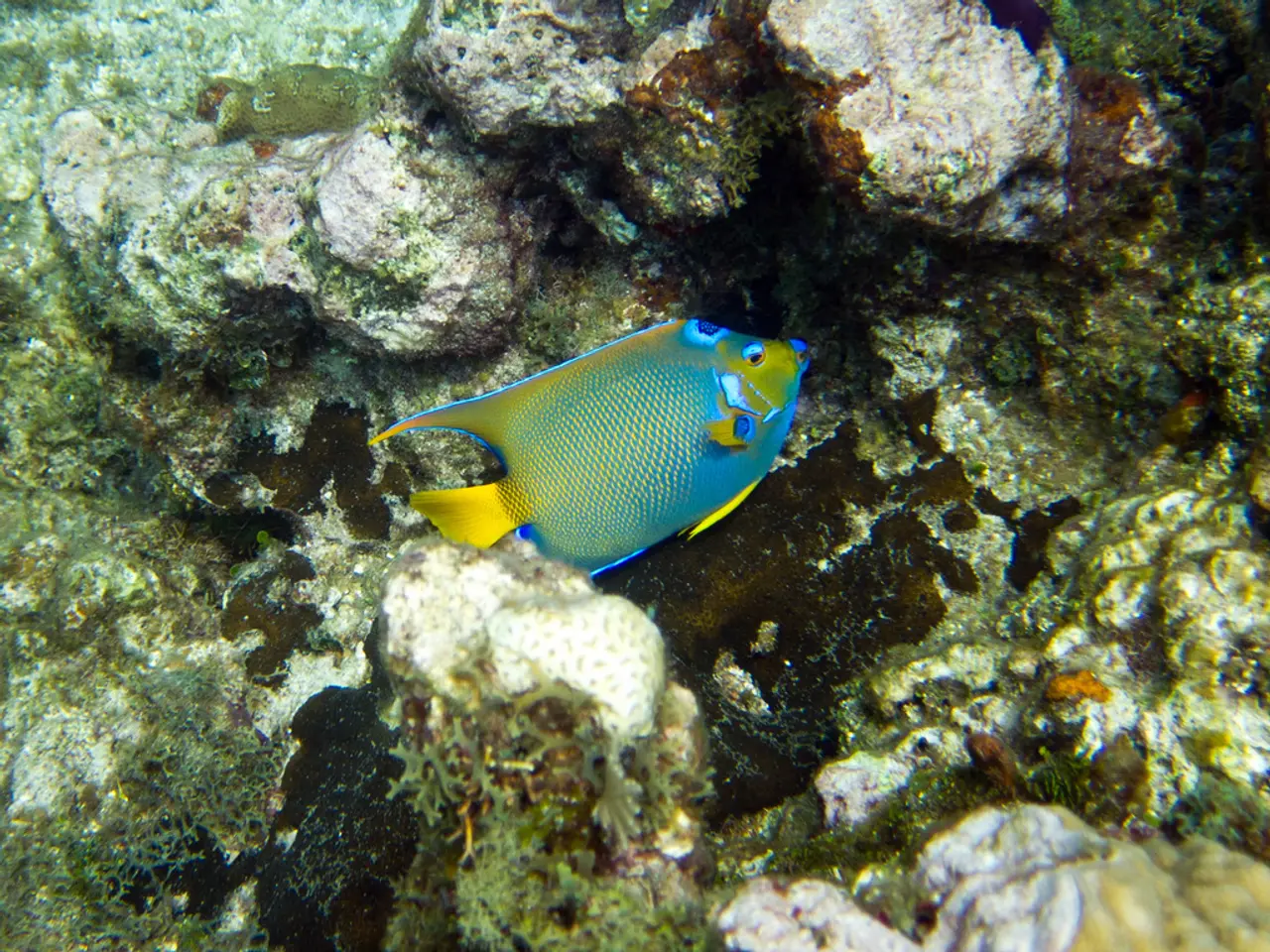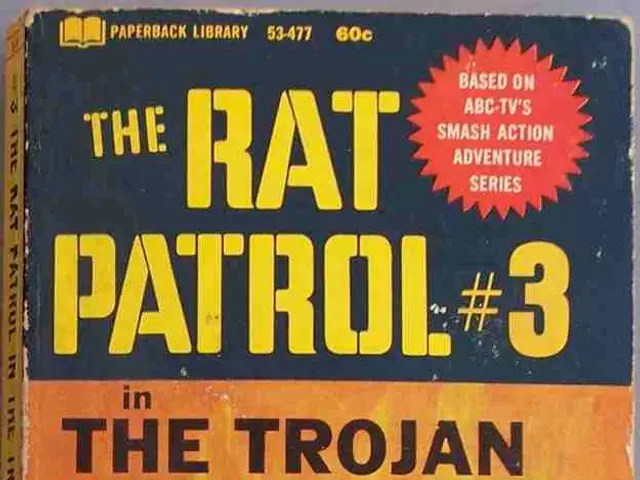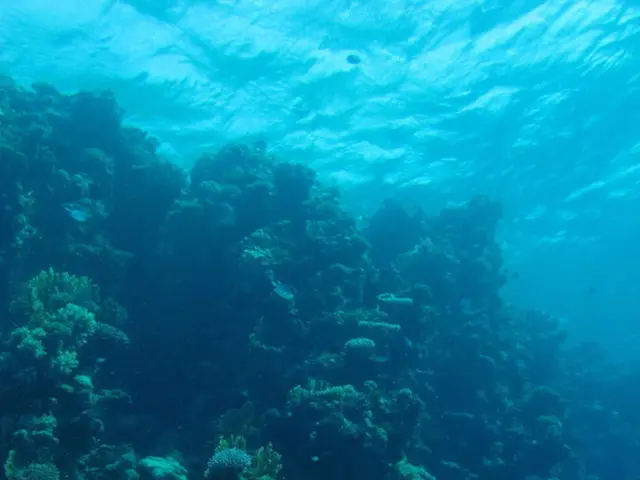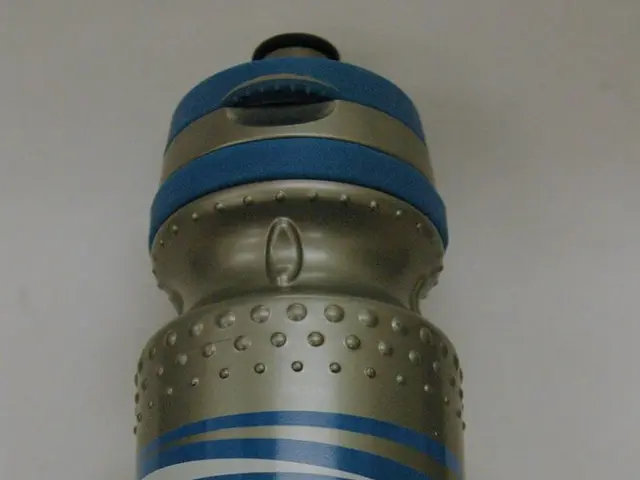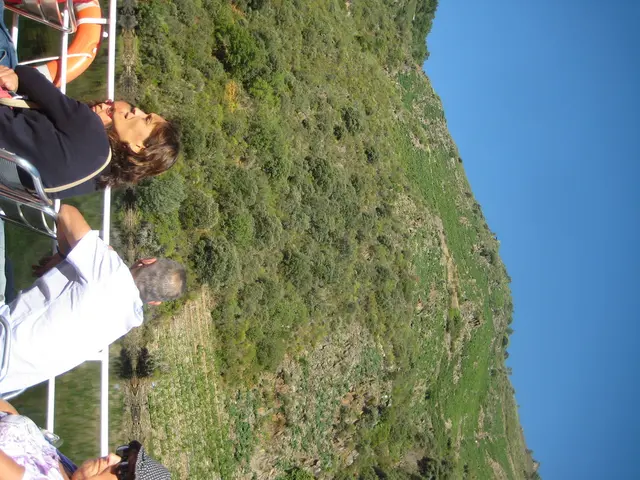Snapping Images of Miniature Seahorses: Pygmy Seahorses Photography
Photographing Pygmy Seahorses: A Guide to Responsible Underwater Imaging
In the captivating world of underwater photography, one of the most elusive and intriguing subjects is the pygmy seahorse. These miniature marvels, such as Hippocampus denise and Hippocampus pontohi, reside in depths of 60 feet and often below, where bottom time is at a premium [1].
To capture these elusive creatures, compact camera systems are advantageous. The focus and framing are done via the LCD on the back of the camera, through the housing, making it easier to find the subject [2]. A skilled dive guide can be invaluable in locating these well-camouflaged animals and helping to avoid unnecessary disturbance to their environment [3].
When photographing pygmy seahorses, it's essential to approach very slowly and carefully, allowing them to remain undisturbed and avoiding stress or damage to their fragile coral or sea fan habitats [3]. It's also crucial to avoid touching or moving the seahorses or their coral habitat to prevent harm or dislodgement of the animals and their homes.
Lighting is another critical factor. Snoots can be difficult to use when shooting pygmy seahorses because the light source must be so close to the subject for proper illumination. However, flash fill via a strobe is a must. A single strobe placed above the centerline of the lens will present excellent results [4]. Natural lighting or low-impact strobes should be used to reduce stress and avoid startling them, while ensuring proper exposure for quality photos.
It's important to check your images in your LCD and histogram for proper exposure, clipping, and focus before leaving your subject. Being judicious in image capture is important, but avoiding monopolizing the subject for extended periods is also crucial [5]. At popular destinations with lots of divers, pygmy seahorses are possibly getting flash-popped hundreds of times in a day.
Side portrait shots are easier to achieve and can be particularly stunning if the animal is isolated from the host with negative space behind its perch. This format, based on the seahorses' shape, lends itself well to vertical shooting [6].
In conclusion, responsible photography of pygmy seahorses focuses on respecting their camouflage and habitat without disruption. By using a skilled dive guide, approaching carefully, avoiding touching, using natural lighting or low-impact strobes, minimizing the time spent photographing, and capturing side portrait shots, we can ensure these delicate creatures and their habitats remain undisturbed for future generations to enjoy.
[1] "Pygmy Seahorse Facts." Seahorse World, seahorseworld.com/pygmy-seahorse-facts. [2] "Photographing Pygmy Seahorses." Wetpixel, wetpixel.com/photographing-pygmy-seahorses. [3] "Pygmy Seahorses: The Ultimate Guide." Bluewater Photo & Travel, bluewaterphotostore.com/blogs/news/pygmy-seahorses-the-ultimate-guide. [4] "Pygmy Seahorse Photography." Alert Diver, alertdiver.com/pygmy-seahorse-photography. [5] "Responsible Diving and Photography of Pygmy Seahorses." Dive Planit, diveplanit.com/blog/responsible-diving-and-photography-of-pygmy-seahorses. [6] "Pygmy Seahorse Photography Tips." Underwater Photography Guide, underwaterphotographyguide.com/pygmy-seahorse-photography-tips.
Read also:
- LA Announces March Lineup for Their Site
- Construction company Newkirk Novak issued a Public Notice in relation to the Clean Water Act
- Guide on Water Chemistry Dosage: Understanding What, How Much, and When to Add!
- Artificial Bovine Creation, a Touchy Beaver Issue, and the Sculptures of Barbara Hepworth
